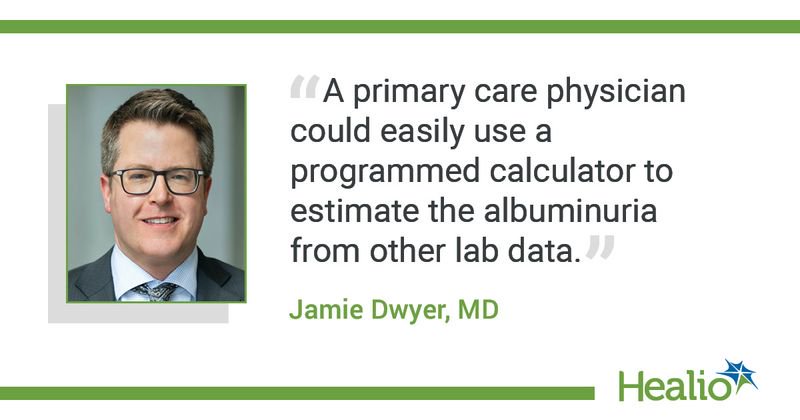Equations converting urine PCR and dipstick protein measures to ACR helpful in staging CKD
Measuring albuminuria in urine is the gold standard for defining and staging chronic kidney disease, or CKD, according to researchers.
However, if that method is unavailable, equations can be used to convert urine protein-creatinine ratios (PCR) and urine dipstick measures to urine albumin-creatinine ratios (ACR), they wrote in Annals of Internal Medicine.

“The diagnostic performance of urine PCR or urine dipstick protein categories and urine ACR and the consistency of relationships across several cohorts and health systems have not been established,” Keiichi Sumida, MD, MPH, PhD, a researcher in the division of nephrology at the University of Tennessee Health Science Center, and colleagues wrote.
Sumida and colleagues developed the equations to convert urine PCR and dipstick protein categories to ACR and tested them in a meta-analysis of 919,383 adults. The mean age of the adults was 61 years; 4.8% were Black, half were women, 56% had diabetes, 72% had hypertension and their median ACR was 14 mg/g. Among all participants, 147,066 pairs of ACR and PCR tests and 1,903,359 pairs of ACR and urine dipstick tests were performed.
“The association between PCR and ACR was inconsistent for PCR values less than 50 mg/g,” the researchers wrote.
However, for higher PCR values, the equations demonstrated “moderate” sensitivity and specificity — 91% and 87% for screening (ACR > 30 mg/g), 75% and 89% for classifying stage A2 (ACR of 30 mg/g to 299 mg/g), and 87% and 98% for classifying stage A3 (ACR of 300 mg/g or higher).
Urine dipstick categories of trace or greater (used to screen for ACR values greater than 30 mg/g), trace to + (used to classify stage A2), and ++ (used to classify stage A3) had “moderate sensitivity” of 62%, 36% and 78%, respectively, and “high specificity” of 88%, 88% and 98%, respectively. For individual risk prediction, the estimated 2-year, four-variable kidney failure risk equation that predicted urine ACR from urine PCR had discrimination comparable to that of using observed urine ACR, the researchers said.
“These results are generalizable to many settings, which is clearly a strength,” doctoral student Tyrone G. Harrison, MD, and Brenda R. Hemmelgarn, MD, PhD, dean of the Faculty of Medicine & Dentistry at the University of Alberta, wrote in a related editorial.
References:
- Harrison TG, Hemmelgarn BR. Ann Intern Med. 2020;doi:10.7326/M20-4211.
- Sumida K, et al. Ann Intern Med. 2020;doi:10.7326/M20-0529.
